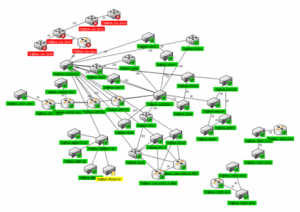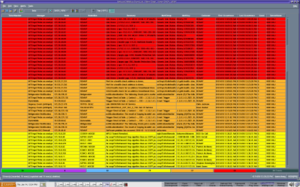There’re five main SNMP message types, TRAP, GET, GET-NEXT, GET-RESPONSE and SET employed as a means of communication between the SNMP manager and SNMP agent.
 TRAPS are the most regularly used SNMP messages. These are sent to the administrator by an agent when a problem or a change occures. SNMP trap is fairly unique when compared to other message types, since it is the only message that is initiated directly by an SNMP agent. The other message types are initiated either by the SNMP administrator or sent as a consequence of the manager’s request. This quality makes SNMP traps vital in most of the networks. In fact, it’s the most suitable means for an SNMP agent to notify the administrator that something is going wrong.
TRAPS are the most regularly used SNMP messages. These are sent to the administrator by an agent when a problem or a change occures. SNMP trap is fairly unique when compared to other message types, since it is the only message that is initiated directly by an SNMP agent. The other message types are initiated either by the SNMP administrator or sent as a consequence of the manager’s request. This quality makes SNMP traps vital in most of the networks. In fact, it’s the most suitable means for an SNMP agent to notify the administrator that something is going wrong.
There’re two major procedures to send helpful data through SNMP traps. The first method is by employing the granular traps. Granular Traps have a distinctive ID number that enables the SNMP managers to differentiate them from each other. The meaning of each Object Identifier is saved in a translation folder called as MIB (Management Information Base) which’s addressed by the SNMP administrator in order to comprehend the trap is sent through the agent.
Credits to the above procedure, the real trap posted by the agent doesn’t have to carry any info regarding the alert, since all the details are accessible in the Management Information Base. Only the Object Identifier is required for the administrator to look up the info in the MIB. This certainly reduces the bandwidth employed by the trap.
 The 2nd means of sending helpful information employing SNMP traps is to include the alert data inside the traps themselves. In such cases, generally all the traps have the identical OID. For the administrator to comprehend these types of traps, it requires to process the info enclosed in the trap. Information is encoded inside an SNMP trap in a distinctive key-value pair pattern. These pairs are known as “variable bindings” and they hold additional info connecting to the trap.
The 2nd means of sending helpful information employing SNMP traps is to include the alert data inside the traps themselves. In such cases, generally all the traps have the identical OID. For the administrator to comprehend these types of traps, it requires to process the info enclosed in the trap. Information is encoded inside an SNMP trap in a distinctive key-value pair pattern. These pairs are known as “variable bindings” and they hold additional info connecting to the trap.
To end, SNMP trap is an extensively used device to alert and check device’s actions across a network. These days so many companies are using SNMP traps for their business profit.






0 comments:
Post a Comment